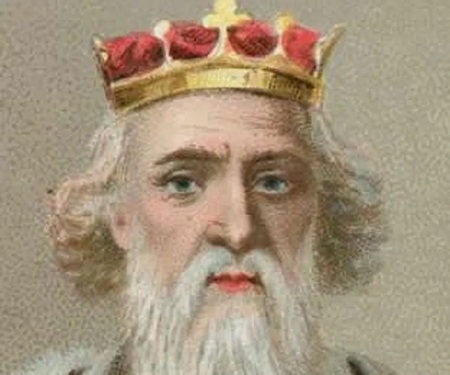



King Edward the Confessor - Quick Stats




Born: c 1008 AD
King Edward the Confessor: A Saintly King in a Time of Transition
King Edward the Confessor, one of the last Anglo-Saxon kings of England, reigned from 1042 until his death in January 1066. His reign is notable for its relative stability compared to the tumultuous periods that preceded and followed it. Edward is remembered as a pious and devout ruler, earning him the epithet “The Confessor,” a title typically reserved for saints who did not suffer martyrdom but lived exemplary Christian lives. His legacy is deeply intertwined with the events that led to the Norman Conquest of England, as well as his role in fostering religious devotion and cultural development.
Early Life and Rise to the Throne
Edward was born around 1003 to King Æthelred the Unready and Queen Emma of Normandy. His early life was marked by instability due to the Viking invasions that plagued England. When King Sweyn Forkbeard of Denmark seized the English throne in 1013, Edward and his family fled to Normandy. During his exile, Edward was heavily influenced by Norman culture, which would later shape his policies as king.
Edward was born around 1003 to King Æthelred the Unready and Queen Emma of Normandy. His early life was marked by instability due to the Viking invasions that plagued England. When King Sweyn Forkbeard of Denmark seized the English throne in 1013, Edward and his family fled to Normandy. During his exile, Edward was heavily influenced by Norman culture, which would later shape his policies as king.
Edward’s path to the throne was far from straightforward. Following Sweyn’s death, Edward’s half-brother Edmund Ironside briefly regained the throne but died soon after. The Danish king Cnut then took control of England, and Edward remained in exile until Cnut’s death in 1035. Political maneuvering and the eventual death of Cnut’s sons paved the way for Edward’s ascension. In 1042, Edward was invited back to England to claim the throne, succeeding his half-brother Harthacnut.
Despite the political turmoil that followed his reign, Edward left a lasting legacy. He was remembered as a model of Christian kingship and became a symbol of national identity during the Middle Ages. The cult of Edward the Confessor flourished in the centuries after his death, with his shrine in Westminster Abbey becoming a popular pilgrimage site. His reign is often seen as the end of the Anglo-Saxon era and a bridge to the Norman period that would reshape England’s culture and governance.
Relations with the Nobility
Edward’s relationship with the English nobility was complex. He relied heavily on powerful earls such as Godwin, Earl of Wessex, and his son Harold Godwinson. However, tensions arose due to Edward’s favoritism toward Norman advisors and clergy, a reflection of his upbringing in Normandy. In 1051, a conflict with Earl Godwin over a dispute in Dover led to Godwin’s temporary exile. This incident highlighted Edward’s reliance on Norman allies but also demonstrated his inability to completely sideline the powerful Anglo-Saxon aristocracy.
Edward’s relationship with the English nobility was complex. He relied heavily on powerful earls such as Godwin, Earl of Wessex, and his son Harold Godwinson. However, tensions arose due to Edward’s favoritism toward Norman advisors and clergy, a reflection of his upbringing in Normandy. In 1051, a conflict with Earl Godwin over a dispute in Dover led to Godwin’s temporary exile. This incident highlighted Edward’s reliance on Norman allies but also demonstrated his inability to completely sideline the powerful Anglo-Saxon aristocracy.
Children: None
Wife: Edith of Wessex
Father: King Athelred II the Unready
Mother: Emma of Normandy
Died: 5th January 1066 AD
Reign and Policies
Edward’s reign was characterized by a mixture of diplomatic skill, religious devotion, and political compromise. Despite his lack of military prowess, Edward managed to maintain relative peace in a kingdom that had been fractured by years of Viking raids and internal strife. One of his key strategies was to balance the interests of powerful factions within England, including the native Anglo-Saxon nobility and the growing Norman influence.
Edward’s reign was characterized by a mixture of diplomatic skill, religious devotion, and political compromise. Despite his lack of military prowess, Edward managed to maintain relative peace in a kingdom that had been fractured by years of Viking raids and internal strife. One of his key strategies was to balance the interests of powerful factions within England, including the native Anglo-Saxon nobility and the growing Norman influence.
The Godwin family’s influence over Edward’s reign grew significantly after Godwin’s return from exile. By the mid-1050s, Harold Godwinson had become one of the most powerful figures in England, effectively acting as the king’s deputy. This reliance on the Godwins ensured stability but also created a fraught political dynamic that would come to a head after Edward’s death.
Diplomatic Relations and Foreign Influence
Edward’s reign also saw important developments in foreign relations. His ties to Normandy, stemming from his upbringing there, brought a strong Norman influence to the English court. This influence was evident in the appointment of Norman clergy to high-ranking positions within the Church, as well as the construction of Westminster Abbey in the Romanesque style popular in Normandy. However, this favoritism toward Normans caused friction with the Anglo-Saxon nobility and created a legacy of division that would influence the succession crisis after Edward’s death.
Edward’s reign also saw important developments in foreign relations. His ties to Normandy, stemming from his upbringing there, brought a strong Norman influence to the English court. This influence was evident in the appointment of Norman clergy to high-ranking positions within the Church, as well as the construction of Westminster Abbey in the Romanesque style popular in Normandy. However, this favoritism toward Normans caused friction with the Anglo-Saxon nobility and created a legacy of division that would influence the succession crisis after Edward’s death.
Edward’s diplomatic efforts extended beyond Normandy. He sought to maintain peace with the powerful Scandinavian kingdoms and neighboring Wales. While not a warrior king, Edward’s ability to avoid large-scale conflict was a testament to his skill as a diplomat.
Edward the Confessor’s Enduring Influence
The reign of Edward the Confessor has been the subject of much historical analysis. While his political achievements may appear modest compared to other monarchs, his role in shaping the cultural and spiritual identity of England cannot be overstated. Edward’s devotion to the Church and his promotion of Norman architectural styles left a lasting imprint on English society. His canonization reinforced his status as a spiritual figure, and his image was invoked by later monarchs seeking to legitimize their rule.
The reign of Edward the Confessor has been the subject of much historical analysis. While his political achievements may appear modest compared to other monarchs, his role in shaping the cultural and spiritual identity of England cannot be overstated. Edward’s devotion to the Church and his promotion of Norman architectural styles left a lasting imprint on English society. His canonization reinforced his status as a spiritual figure, and his image was invoked by later monarchs seeking to legitimize their rule.
Religious Contributions
Edward’s deep piety influenced many aspects of his reign. He was a generous patron of the Church and played a significant role in the development of religious institutions. His most notable contribution was the construction of Westminster Abbey, which he commissioned in the Romanesque style popular in Normandy. Completed shortly before his death, Westminster Abbey served as a symbol of Edward’s devotion and remains one of the most iconic landmarks in England.
Edward’s deep piety influenced many aspects of his reign. He was a generous patron of the Church and played a significant role in the development of religious institutions. His most notable contribution was the construction of Westminster Abbey, which he commissioned in the Romanesque style popular in Normandy. Completed shortly before his death, Westminster Abbey served as a symbol of Edward’s devotion and remains one of the most iconic landmarks in England.
Edward’s piety and reputation for holiness earned him widespread admiration. Miracles were attributed to him during his lifetime, and his reputation as a saintly king grew after his death. In 1161, he was canonized by Pope Alexander III, solidifying his status as a key figure in English religious history. The cult of Edward the Confessor became a unifying force in the years following the Norman Conquest, as his shrine in Westminster Abbey attracted pilgrims from across Europe.
Predecessor: Harthacnut
Successor: King Harold II (Godwinson)
Succession Crisis and Legacy
Edward’s failure to produce an heir was one of the most significant aspects of his reign. This lack of a direct successor led to a contentious dispute over the English throne upon his death. While Edward had supposedly promised the throne to William, Duke of Normandy, the Witan (the council of nobles) elected Harold Godwinson as king. This decision set the stage for the Norman invasion later that year, culminating in the Battle of Hastings and the ascension of William the Conqueror.
Edward’s failure to produce an heir was one of the most significant aspects of his reign. This lack of a direct successor led to a contentious dispute over the English throne upon his death. While Edward had supposedly promised the throne to William, Duke of Normandy, the Witan (the council of nobles) elected Harold Godwinson as king. This decision set the stage for the Norman invasion later that year, culminating in the Battle of Hastings and the ascension of William the Conqueror.
The succession crisis was exacerbated by Edward’s ambiguous promises and his reliance on both Norman and Anglo-Saxon factions. William of Normandy claimed that Edward had designated him as his heir during a visit to Normandy, while Harold Godwinson’s coronation was seen as a betrayal by the Normans. These conflicting claims would have profound consequences, ultimately leading to the end of the Anglo-Saxon era.
Edward’s reign also highlights the complexities of leadership during a transitional period in English history. Balancing the competing interests of Anglo-Saxon and Norman factions required diplomatic skill, and his inability to secure a clear line of succession underscores the challenges faced by medieval rulers.
Conclusion
King Edward the Confessor occupies a unique place in English history. His reign, though relatively peaceful, was pivotal in shaping the events that would lead to the Norman Conquest. As a deeply religious and culturally significant figure, Edward’s contributions to English history extend beyond his time on the throne. His piety, patronage of the Church, and role in fostering Norman influence left an indelible mark on the nation. Today, Edward is remembered not only as a king but also as a saint, a testament to his enduring legacy in both the secular and spiritual realms of England’s history.
King Edward the Confessor occupies a unique place in English history. His reign, though relatively peaceful, was pivotal in shaping the events that would lead to the Norman Conquest. As a deeply religious and culturally significant figure, Edward’s contributions to English history extend beyond his time on the throne. His piety, patronage of the Church, and role in fostering Norman influence left an indelible mark on the nation. Today, Edward is remembered not only as a king but also as a saint, a testament to his enduring legacy in both the secular and spiritual realms of England’s history.



